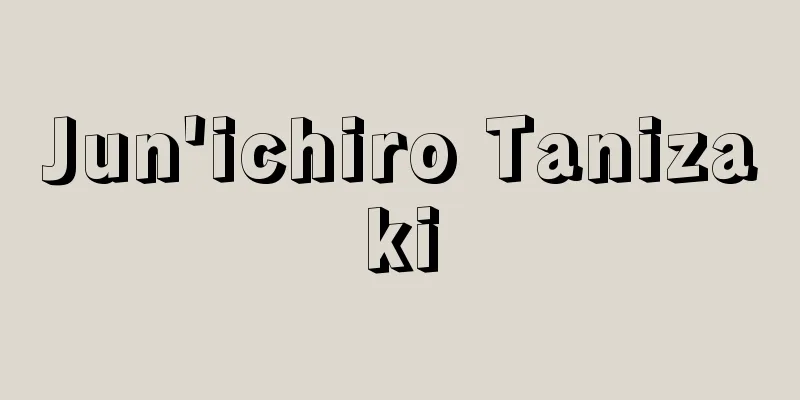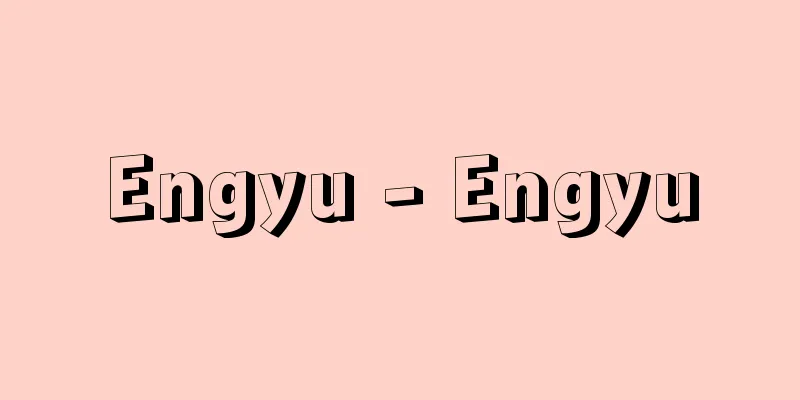Jun'ichiro Tanizaki

|
Novelist. Born on July 24, 1886, in Kakigaracho, Nihonbashi, Tokyo (now Ningyocho, Nihonbashi). His father was Kuragoro and his mother was Seki. Kuragoro was a married couple, and Junichiro had three sons and three daughters (his youngest brother was the English literature scholar Seiji Tanizaki). His grandfather Kyuemon was an enterprising merchant who made a fortune in one generation, and his mother Seki was a famous beauty who was "made the Ozeki of Bijin-e Zoshi" (Childhood). However, Kuragoro was poor at business and repeatedly failed, and although he was brought up with great care as the son of a landlord, by the time he graduated from the higher department of Sakamoto Elementary School, he was unable to advance to junior high school. With the consideration of his teachers and uncle, he entered the Prefectural First Middle School (now Hibiya High School) in 1901 (Meiji 34) at the age of 16 (by the Japanese age reckoning system), and the following year, he was given the privilege of being a gifted child and was able to skip a grade and enter the third grade. One of his classmates was Tatsuno Yutaka. He attracted attention early on by publishing compositions and Chinese poetry in the Alumni Association Magazine, and in 1905 he entered the English and Law Department of First Higher School, where he became a member of the Literature Club and published novels such as Chin's Funeral (1907) in the Alumni Association Magazine. In 1908, he graduated from the English and Law Department of First Higher School, "making the tragic decision to become a writer" ("Seishun Monogatari") and went on to study Japanese Literature at Tokyo Imperial University. [Norio Okubo] Debut in the literary worldIn September 1910 (Meiji 43), he founded the second Shinshicho with Osanai Kaoru as its leader, along with Watsuji Tetsuro, Onuki Shosen, Goto Sueo, and Kimura Sota. Funding was provided by Kimura Sota and Sasanuma Gennosuke, the only son of the famous Chinese restaurant Kairakuen, who had been his close friend since elementary school. The naturalist literary movement that had begun with Shimazaki Toson's Hakai (1906) had finally reached a dead end, and Junichiro, encouraged by the rise of anti-naturalism, published Tanjo (Birth) in the inaugural issue, Elephant (Elephant) in the October issue, Tattoo (Irezumi) in the November issue, and Kirin (Giraffe) in the December issue. After the magazine ceased publication after the seventh issue, he published "Shounen" and "Houkan" (both in 1911) as a member of the "Subaru" group. During this time, he was ordered to drop out of Tokyo Imperial University for not paying tuition fees. However, in the November issue of "Chuokoron" in that year, "Himitsu" was published, and in the same November issue of "Mita Bungaku," Nagai Kafu wrote "The Works of Junichiro Tanizaki" and highly praised the qualities of Tanizaki's literature, marking his spectacular debut as a budding writer. Kafu cited the notable qualities of Tanizaki's literature as, first, "the mysterious and profound quality born from physical fear," second, "the utter urbanity," and third, "the perfection of the writing," which was an early and accurate identification of the essence of Tanizaki's literature. His next work, "Akuma" (1912), contains extreme masochism and praise for the devilish nature of women, and this tendency continues in "Koi ni shiru koro" (The time to know love) (1913) and the artist novel "Jotaro" the following year, creating his own unique world. However, this led him to move away from his wandering, art-first lifestyle and towards a more normal lifestyle, and in 1915 (Taisho 4), he married Ishikawa Chiyo, and wrote a series of stories about poisonous women, including "Otsuya koro" (Grabbing the Beauty) (1915), but these works were all banned, and he turned to autobiographical works such as "Shindou" (Prodigy) (1916) and "Hitotsusha no kanashii" (The Heretic's Sadness) (1917). In these works too, his assertion of the artistic quality and legitimacy of "evil" is clear, and in works such as "Cursed Play" (1919) and "On the Way" (1920), which use thriller-style themes of wife-murder, the shadow of his love affair with his wife Chiyo's younger sister, Seiko, looms large. [Norio Okubo] Odawara IncidentJunichiro lost his mother in 1917 (Taisho 6) and his father in 1919, and moved to Odawara, Kanagawa Prefecture, where he became an advisor to the scriptwriting department of Taisho Katsuei Company Ltd. from 1920 to the following year, and attempted to produce a film with Seiko (stage name Hayama Michiko) as the lead actress. It was also in 1921 that the so-called "Odawara Incident" occurred, in which Tanizaki broke off relations with his close friend Sato Haruo due to troubles surrounding his wife Chiyo, but it was not until 10 years later, in 1930 (Showa 5), that the incident was resolved with Junichiro divorcing his wife Chiyo and Haruo marrying Chiyo. However, during this time, Tanizaki's literature made a groundbreaking leap forward when he moved to Kansai following the Great Kanto Earthquake of 1923. His novel "A Fool's Love" (1924-25) was praised as a novel of manners depicting the lifestyle of a modern girl born out of the American climate after the earthquake, and his sequel "Manji" (1928-30) was noted as a unique long novel in which a wife who becomes obsessed with the charms of the same sex confesses in Osaka dialect the drama of her husband's downfall. "The Water Lily Eater" (1928-29) is a "divorce waiting novel" with strong autobiographical elements, but it already shows his desire to return to Japan as a harbinger of the classical era that would come a few years later. During this time, he also visited Shanghai, where he had a so-called "plot debate" with Akutagawa Ryunosuke, who was about to commit suicide. [Norio Okubo] Classical periodIn January 1931 (Showa 6), he published "Yoshino Kuzu," which deepened the theme of maternal longing for the first time since "A Record of Longing for My Mother" (1919). This was followed in September by "Blind Tales," and from October to November of the following year, "Secret Stories of the Lord Bushu" and "Ashikari" (1932). However, his greatest work during this period, known as his "classical period," is undoubtedly "Shunkinsho" (1933), in which he shows an intense display of prostration before women, which is directly linked to his attitude towards Nezu Matsuko (who he married in 1935). In 1933, Junichiro wrote "In Praise of Shadows," which touched on the rediscovery of Japanese beauty, and then, in 1935, he began a modern translation of "The Tale of Genji," which became his lifelong work. In 1936, he wrote "A Cat, Shozo, and Two Women," and in 1937, he was recommended as a member of the Japan Art Academy. In 1942, he began writing "Sasameyuki," a masterpiece that depicts the four sisters of the Makioka family, who grew up in Senba, Osaka, and in 1948 (Showa 23), after the war, he was awarded the Order of Culture the following year. [Norio Okubo] The postwar period of abundanceJun'ichiro was already 59 years old when Japan lost the war, and although he suffered from high blood pressure, he continued to write prolifically, writing works such as "Shosho Shigemoto's Mother" (1949-50), "Kagi" (1956), "Yume no Ukihashi" (1959), and "Futen Rojin Nikki" (The Diary of a Mad Old Man) (1961-62), each of which showed new territory while deepening the themes he had been working on for many years. On July 30, 1965, he developed heart failure after developing kidney failure and passed away in his new home in Yugawara, Kanagawa Prefecture. He is buried at Honen-in Temple in Shishigatani, Sakyo Ward, Kyoto City. [Norio Okubo] "The Complete Works of Tanizaki Junichiro, 28 volumes (1972-75, Chuokoron-Shinsha)" ▽ "The Literature of Tanizaki Junichiro, by Ito Sei (1970, Chuokoron-Shinsha)" ▽ "Biography of Tanizaki Junichiro, by Nomura Shogo (1974, Rokuko Publishing)" ▽ "On Tanizaki Junichiro, by Noguchi Takehiko (1973, Chuokoron-Shinsha)" ▽ "Tanizaki Junichiro - The Eros of Fate, by Kasahara Nobuo (1980, Fuyuki-sha)" [References] | | | | | | [Chronology] |Source: Shogakukan Encyclopedia Nipponica About Encyclopedia Nipponica Information | Legend |
|
小説家。明治19年7月24日東京・日本橋蠣殻(かきがら)町(現日本橋人形町)に生まれる。父は倉五郎、母は関。倉五郎は入り婿で、潤一郎の下に三男三女がある(すぐ下の弟が英文学者谷崎精二)。祖父久右衛門は一代で産をなした進取の気性の商人で、母の関は「美人絵双紙の大関にされてゐた」(『幼少時代』)という評判の美人であった。が、倉五郎は商売下手で失敗を繰り返し、幼時は大家の坊ちゃんとしてだいじに育てられながら、坂本小学校の高等科を卒業するころは、中学へも進めない状態になる。教師や伯父の配慮で、1901年(明治34)数え年16歳で府立一中(現日比谷(ひびや)高校)に入学、翌年、秀才の特典で飛び級をして3年生になる。同級に辰野隆(たつのゆたか)がいた。『学友会雑誌』に早くから作文や漢詩を発表して注目され、05年、一高英法科に入学、文芸部委員となり、『校友会雑誌』に小説『狆(ちん)の葬式』(1907)その他を発表。08年、一高英法科を卒業、「創作家にならうと云(い)ふ悲壮な覚悟をきめ」(『青春物語』)て、東京帝国大学国文科に進む。 [大久保典夫] 文壇にデビュー1910年(明治43)9月、小山内薫(おさないかおる)を盟主として、和辻(わつじ)哲郎、大貫晶川(おおぬきしょうせん)、後藤末雄、木村荘太(そうた)らと第二次『新思潮』を創刊。資金は、小学校時代からの親友で、著名な中華料理店偕楽(かいらく)園のひとり息子笹沼(ささぬま)源之助と、木村荘太から提供された。島崎藤村(とうそん)の『破戒』(1906)に始まる自然主義文学運動もようやく行き詰まり、反自然主義の台頭に励まされた潤一郎は、創刊号に『誕生』、10月号に『象』、11月号に『刺青(しせい)』、12月号に『麒麟(きりん)』を相次いで掲載。同誌が7号で廃刊になったあと、続いて『スバル』の同人として『少年』『幇間(ほうかん)』(ともに1911)を発表。この間、東京帝大から授業料未納のかどで退学を命ぜられる。が、その11年の11月号の『中央公論』に『秘密』が掲載され、しかも同じ11月号の『三田文学』に永井荷風が『谷崎潤一郎氏の作品』を書き、その文学の特質を激賞するに及んで、新進作家として華やかにデビューする。荷風は谷崎文学の顕著な特質として、第一に、「肉体的恐怖から生ずる神秘幽玄(ゆうげん)」、第二に「全く都会的なる事」、第三に「文章の完全なる事」をあげたが、これは谷崎文学の本質のいち早い指摘として正鵠(せいこく)を射たものといえよう。続いて発表した『悪魔』(1912)には、極端なマゾヒズムと女性の悪魔性への賛美があり、この傾向は、『恋を知る頃(ころ)』(1913)から翌年の芸術家小説『饒太郎(じょうたろう)』に至って独自の世界を築く。しかし、これが芸術至上主義的な放浪生活から生活の正常化への志向を生み、15年(大正4)、石川千代と結婚し、『お艶(つや)殺し』(1915)以下の毒婦物を相次いで書くが、立て続けに発禁になり、『神童』(1916)、『異端者の悲しみ』(1917)などの自伝的作品に血路をみいだしてゆく。これらにも、「悪」の芸術性と正当性の主張が顕著で、また、『呪(のろ)はれた戯曲』(1919)、『途上』(1920)などのスリラー的手法による妻殺しがテーマの作品には、妻千代の妹せい子との恋愛の影が揺曳(ようえい)している。 [大久保典夫] 小田原事件潤一郎は、1917年(大正6)に母を、19年に父を相次いで失い、神奈川県小田原(おだわら)に転居、20年から翌年にかけて大正活映株式会社の脚本部顧問となり、せい子(芸名・葉山三千子)を主演女優に映画製作を試みたりする。また、妻千代をめぐるトラブルから、親友の佐藤春夫と絶交する、いわゆる「小田原事件」の起こるのも21年中で、潤一郎が妻千代と離婚し、春夫が千代と結婚することで事件の解決をみるのは、実に10年後の30年(昭和5)中のことである。しかし、この間、23年の関東大震災をきっかけに関西に移住したことで、谷崎文学は画期的な飛躍を遂げる。『痴人の愛』(1924~25)は、震災後のアメリカ的風潮が生んだモダン・ガールの生態を描いた風俗小説として評判になり、続く『卍(まんじ)』(1928~30)は、同性の魅力のとりこになった人妻とその夫の破滅劇を、その人妻が大阪弁で告白する異色の長編として注目された。『蓼喰(たでく)ふ虫』(1928~29)は、自伝的要素の濃い「離婚待機小説」だが、すでにここに、数年後の古典主義時代の予兆としての日本回帰の志向がみられる。また、この間、上海(シャンハイ)に遊び、自殺直前の芥川龍之介(あくたがわりゅうのすけ)といわゆる「『小説の筋』論争」を交わしたりした。 [大久保典夫] 古典主義時代1931年(昭和6)1月、『母を恋ふる記』(1919)以来の母性思慕の主題を深めた『吉野葛(よしのくず)』を発表。続いて9月『盲目物語』、10月から翌年11月にかけて『武州公秘話』、そして『蘆刈(あしかり)』(1932)を発表。しかし、「古典主義時代」といわれるこの期の最高傑作は、なんといっても33年の『春琴抄(しゅんきんしょう)』で、ここにみられる徹底した女性拝跪(はいき)は、そのまま根津松子(1935年結婚)への姿勢とつながるものだろう。 潤一郎は、1933年、日本美の再発見に言及した『陰翳礼讃(いんえいらいさん)』を書き、続いて、35年から、終生の仕事となった『源氏物語』の現代語訳に着手する。また、36年『猫と庄造(しょうぞう)と二人のをんな』を書き、37年には芸術院会員に推された。42年から『細雪(ささめゆき)』の執筆を始め、戦後の48年(昭和23)、大阪の船場(せんば)育ちの蒔岡(まきおか)家の四姉妹を描いたこの大作を完成、翌年、文化勲章を授与される。 [大久保典夫] 豊饒の戦後敗戦の年、すでに59歳であった潤一郎は、高血圧症に悩まされながらも、なお旺盛(おうせい)な執筆活動を続け、『少将滋幹(しげもと)の母』(1949~50)、『鍵(かぎ)』(1956)、『夢の浮橋』(1959)、『瘋癲(ふうてん)老人日記』(1961~62)と、積年のテーマの深化を図りながら一作ごとに新境地を示す話題作を書き続け、昭和40年7月30日、腎(じん)不全から心不全を併発し、神奈川県湯河原(ゆがわら)の新居で死去した。京都市左京区鹿(しし)ヶ谷(たに)法然院に葬られている。 [大久保典夫] 『『谷崎潤一郎全集』全28巻(1972~75・中央公論社)』▽『伊藤整著『谷崎潤一郎の文学』(1970・中央公論社)』▽『野村尚吾著『伝記谷崎潤一郎』(1974・六興出版)』▽『野口武彦著『谷崎潤一郎論』(1973・中央公論社)』▽『笠原伸夫著『谷崎潤一郎――宿命のエロス』(1980・冬樹社)』 [参照項目] | | | | | | [年表] |出典 小学館 日本大百科全書(ニッポニカ)日本大百科全書(ニッポニカ)について 情報 | 凡例 |
Recommend
Report of the United States Educational Mission
...The traditionally privileged concept of "...
Amakusa coalfields
A coalfield in the Amakusa Islands, Kumamoto Prefe...
Yokohama Specie Bank
The bank was established in Yokohama in 1880 (Mei...
Propos sur le bonheur (English: Propos sur le bonheur)
…As one of the 20th century Cartesians, he inheri...
Punching - Uchinuki
[given name] 1. To punch out. 2. The act of pressi...
Interbank transactions - ginkoukan torihiki
⇒Interbank Source: About Shogakukan Digital Daijis...
Recurring decimal - junkanshosou (English spelling)
In decimals such as 0.33..., 0.142857142857..., 0....
Toin family
The Northern Fujiwara clan, the first branch of th...
Erich Kästner
German poet, novelist, and children's writer....
conscientia
…Since cum generally implies a collective meaning...
Andaman Islands - Andaman
Located in the southeastern Bay of Bengal, it cons...
River regime coefficient
This is the ratio between the maximum and minimum ...
Crab-eating monkey - Crab-eating monkey
An Old World monkey (illustration) of the Cercopit...
Magic tricks
A form of entertainment or play that aims to ente...
Conditioned response
…Pavlov's conditioned reflexes started in the...









